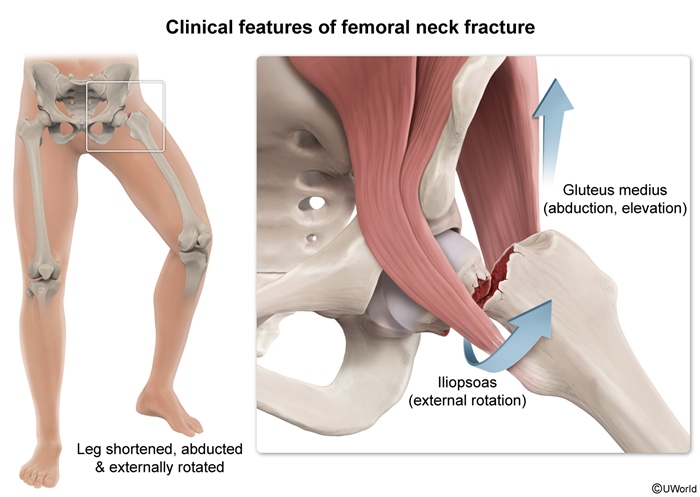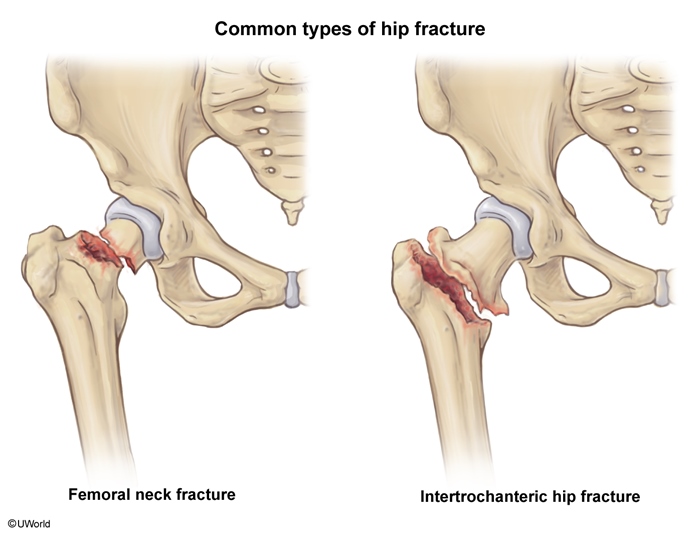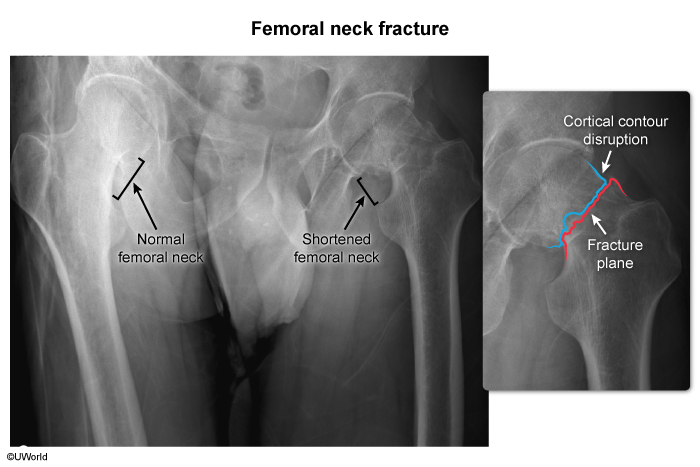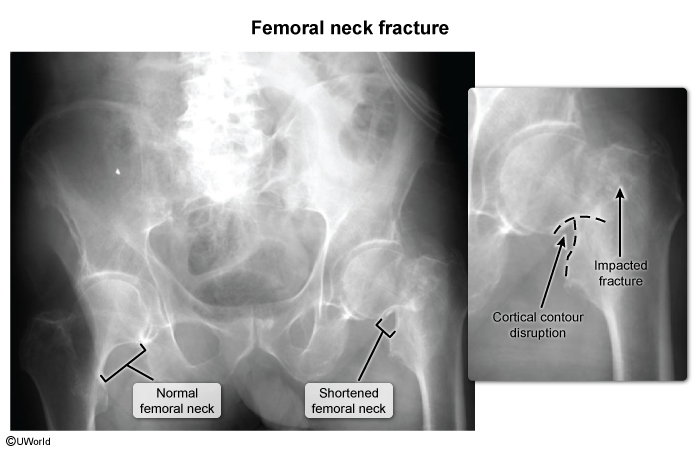Hip Fractures
Article Sections
Introduction
Hip fractures are common injuries that involve a break in the proximal femur. They are classified as either intracapsular, which involve the femoral head and neck, or extracapsular, which involve the intertrochanteric or subtrochanteric regions. Hip fractures most often occur in elderly adults (age >65) following a fall. Patients typically present with severe hip or groin pain, an inability to ambulate, and a leg that is shortened and externally rotated on the affected side. Hip fractures generally require surgical correction.
Anatomy
The hip joint is a ball-and-socket joint formed by the head of the femur (the ball) and the acetabulum of the pelvis (the socket). The joint is enclosed by a fibrous capsule, which contains synovial fluid to lubricate and nourish the joint. The capsule originates from the acetabulum and inserts onto the femur at the base of the distal femoral neck.
Continue Learning with UWorld
Get the full Hip Fractures article plus rich visuals, real-world cases, and in-depth insights from medical experts, all available through the UWorld Medical Library.
Figures

Images


